Samsung 950 Pro SSD Review
NVMe in the M.2 form factor is finally a reality for desktop enthusiasts. Retailers begin selling Samsung's 950 Pro today, and we already have three drives in-hand.
Why you can trust Tom's Hardware
Real-World Workload Performance
PCMark 8 Real-World Software Performance
For details on our real-world software performance testing, please click here.
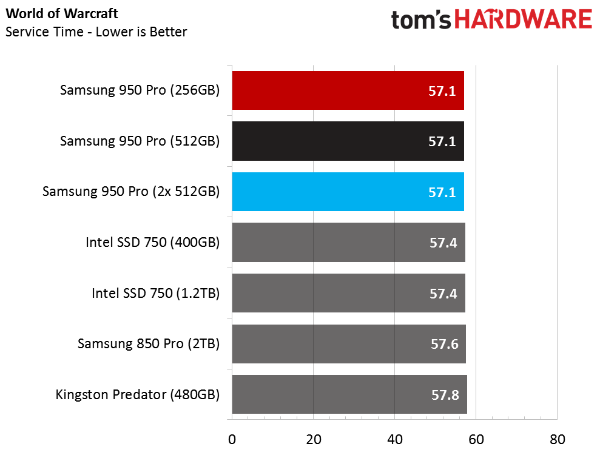
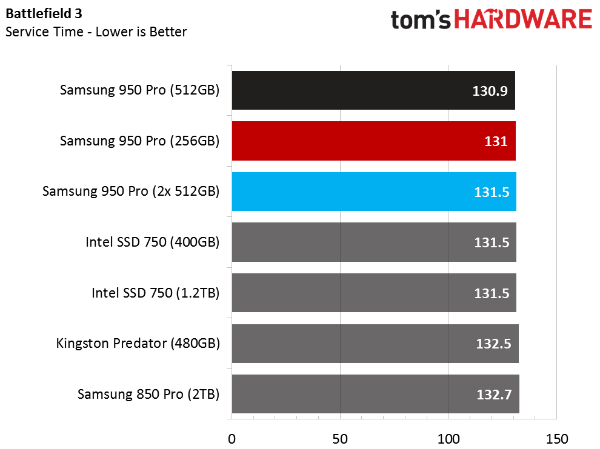
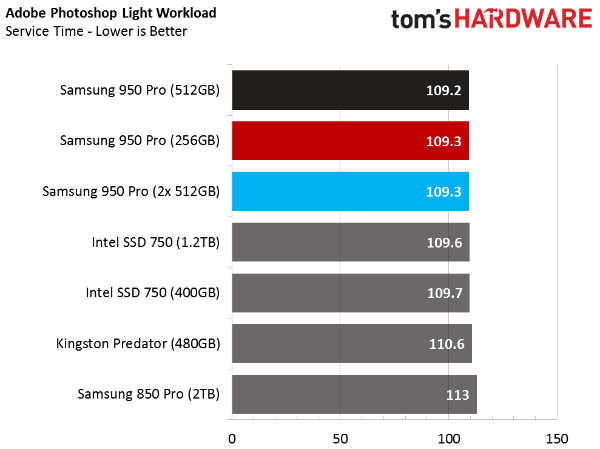
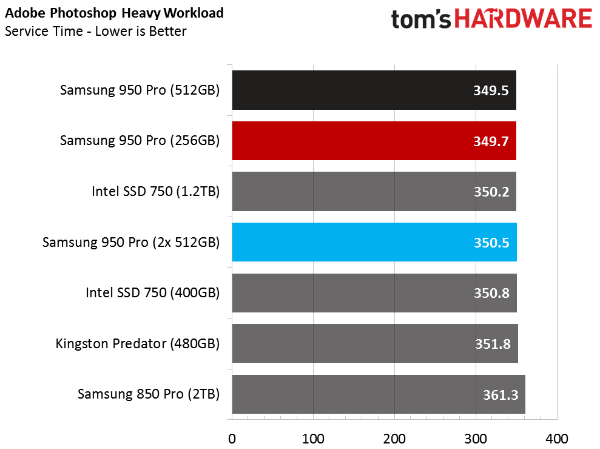
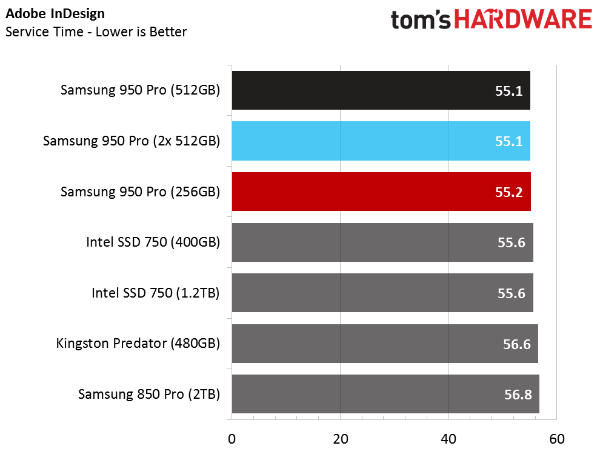
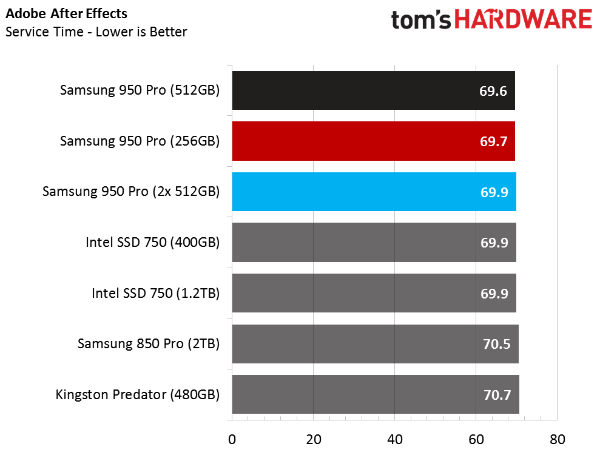
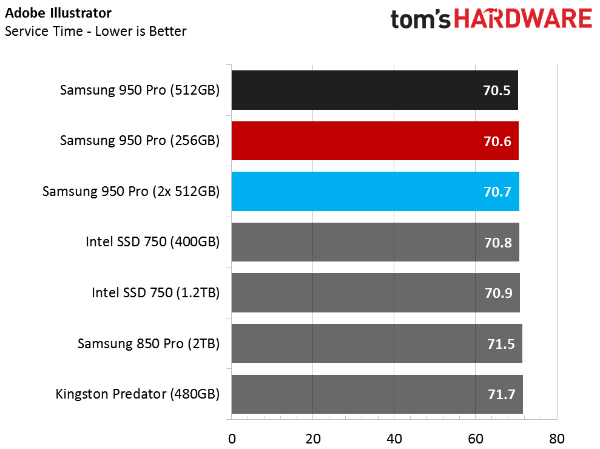
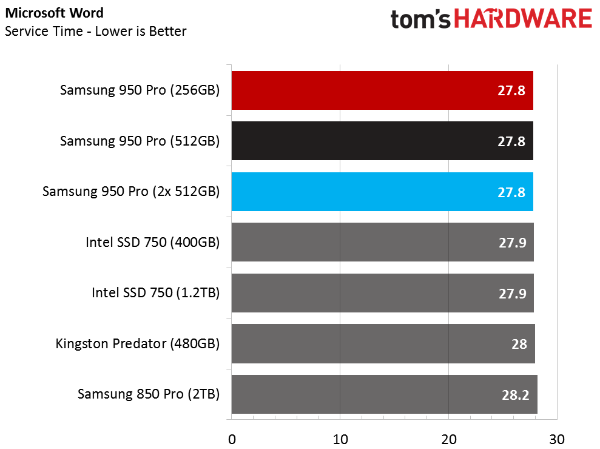
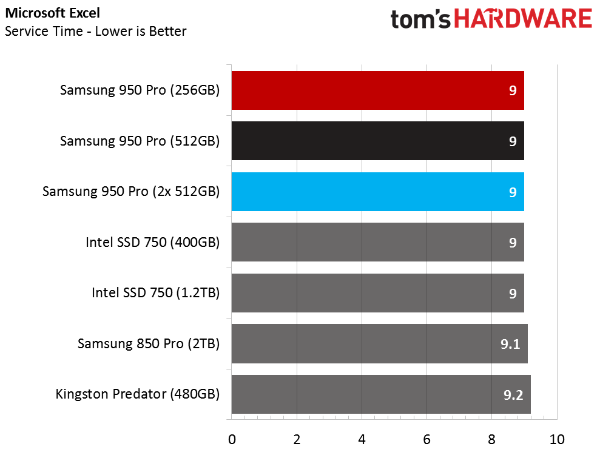
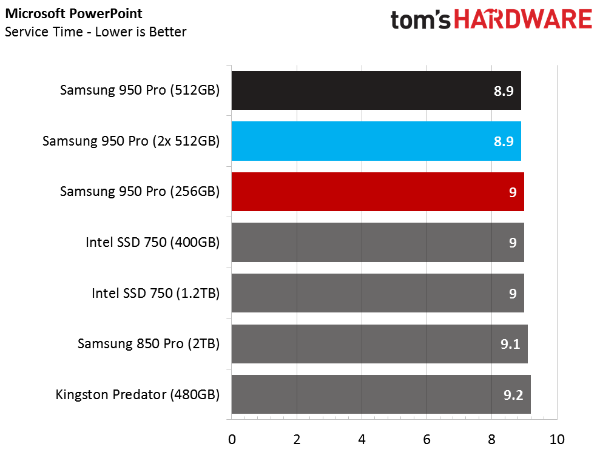
RAID is a touchy subject. Some people claim it doesn't improve performance and others swear by it. What really matters is your workload and the type of data you manipulate. Our results favor the 950 Pros in single-drive configurations because they utilize Samsung's NVMe driver. Once we finished our standard tests, we tried to force the array to use the same software, but were unsuccessful.
Remember back to our earlier results, where Samsung's 950 Pro demonstrated superior low queue depth performance compared to the competition. This set of tests, based on real-world software, shows how the extra bandwidth at low queue depths saves time. There isn't much separation to speak of, but the Adobe Photoshop Heavy benchmark shows how heavy loads are accelerated by higher-performing SSDs. The difference between Samsung's 512GB 950 Pro and 2TB 850 Pro is right around 11 seconds.
Combined Storage Bandwidth
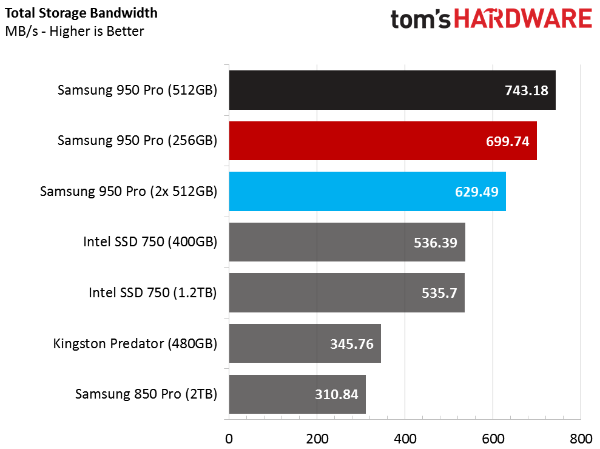
This graph's results are averaged and presented in terms of throughput (rather than time to completion). The 950 Pros dominate our light workloads. But can Samsung carry its momentum into the tests where heavy conditioning precedes the measurements?
PCMark 8 Advanced Workload Performance
To learn how we test advanced workload performance, please click here.
It takes the 512GB 950 Pro to match the SSD 750's performance. RAID 0 helps under heavy steady state loads, but not as much as we expected. This is a result of the DMI's limited bandwidth, even though Intel just upgraded the interface to third-gen PCIe.
Latency Tests
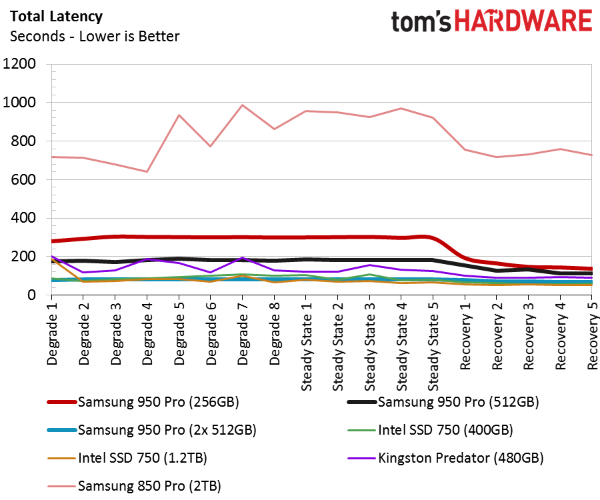
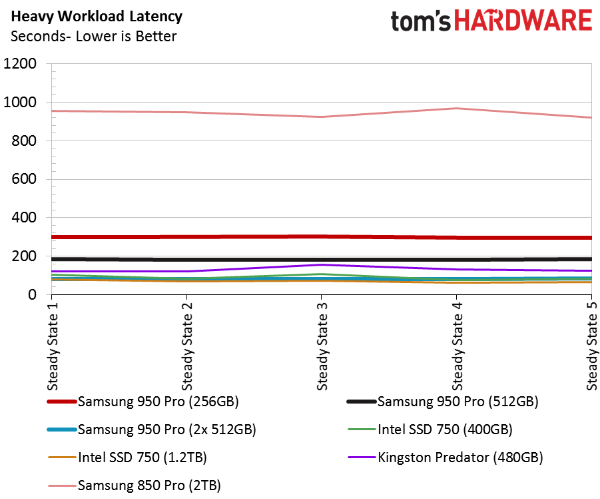
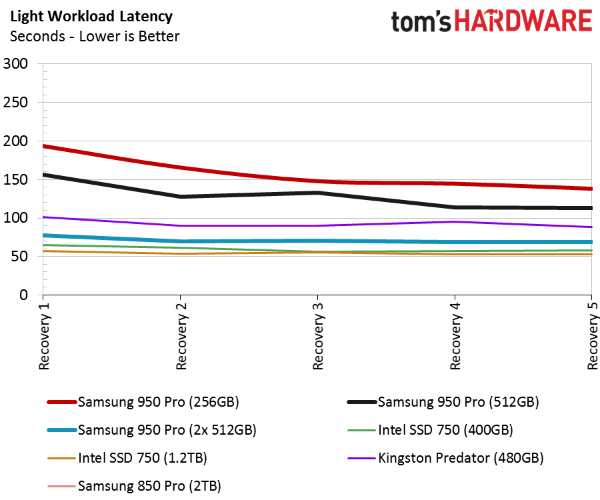
Up until now, nearly all of our tests favored the Samsung 950 Pro. Latency tests are arguably more important when you're looking for snappy responsiveness though, and Intel's SSD 750 takes this measurement by a comfortable margin. Samsung may have room to improve through firmware updates. Then again, the 2TB 850 Pro also has latency issues after heavy workloads, and that's a drive we'd expect to be mature. Samsung's 830 suffered similarly. The company changed some of its programming for the 840 family to eradicate that behavior, and we can only hope it'll do the same for its latest creation.
What you are seeing is garbage collection and wear-leveling utilizing the controller's resources. Some companies delay wear-leveling operations until the drive is idle. Others give priority to housekeeping activities. There are pros and cons to both approaches. Since the 950 Pro will invariably end up in enthusiast and workstation PCs, this is the method Samsung deemed best.
We expect Rapid Mode to make a big difference under normal workloads. The DRAM cache tiering feature is part of Samsung's Magician suite. Unfortunately, the newest version with support for the 950 Pro wasn't available when we wrote our review.
Current page: Real-World Workload Performance
Prev Page Mixed and Steady State Workload Performance Next Page ConclusionStay On the Cutting Edge: Get the Tom's Hardware Newsletter
Get Tom's Hardware's best news and in-depth reviews, straight to your inbox.
-
alidan you need to had a standard hdd to some of these, such as the gaming benchmark, as i want to say most of us dont have money for a ssd game drive, but a 4tb drive that can almost hold every game you own if you install everything, that's more readily available, apposed to the same price for 1/8th the space.Reply -
Larry Litmanen I always wondered why was M.2 designed to lay flat on the motherboard and not sideways like RAM. Wouldn't you save a lot more space on the mobo, plus if it is sideways you can easily find a spot for it on MITX boards.Reply
Also, if i have a modern motherboard (i have MSI Gaming 5, Z97) do i need to go into the BIOS and change something if i want to install this M.2 NVMe SSD.
I know you had to do something on older mobos when installing an SSD. -
Larry Litmanen Replyyou need to had a standard hdd to some of these, such as the gaming benchmark, as i want to say most of us dont have money for a ssd game drive, but a 4tb drive that can almost hold every game you own if you install everything, that's more readily available, apposed to the same price for 1/8th the space.
I game a lot and i have 850 Pro in 256 GB capacity. You don't really need that much space for games if you keep only 2-3 games installed at once. I play one game at a time, when i finish i just uninstall it. What's the point of saving it on PC if i will not play it again ever or at least for a while.
-
jtown80 alidan... no one wants reviews of standard Hard drives. Your behind the times if your still focusing on them and it is pointless to do benchmarks on them.Reply -
CRamseyer Hard drive performance barely even show up on the results when we show throughput performance. The reverse happens in the latency tests, the HDD lines are so long you can hardly see the NVMe performance.Reply -
rgd1101 Can you check the temp and power usage?Reply
Perform much better on the Z170 then on the Z97 reviewed at anandtech.com
Wonder how it perform on an AMD motherboard. -
tom10167 Very cool, I was/am excited for this. However the real world bencmarks say it all. Best case scenario 12 seconds on a 6 minute job is not much and many of those tests were showing half a second difference in performance. Nowhere near good enough for me. Still a nice step but I'll wait for cheaper m2 drives.Reply -
rgd1101 850 PRO EVO is cheaper. Wish they compare both 512GB m.2 and the SATA drive.Reply
Real world peformance probably close. -
arossetti I'm glad this form factor is starting to take off and is reasonably priced. Less cables and power connectors to muck up a build.Reply
